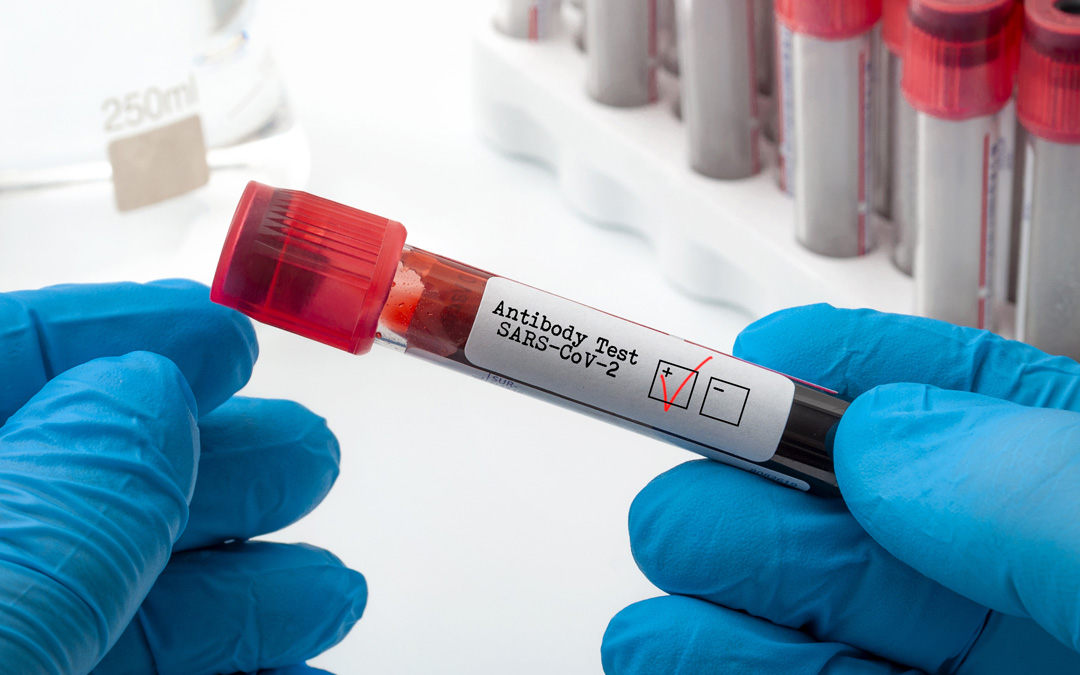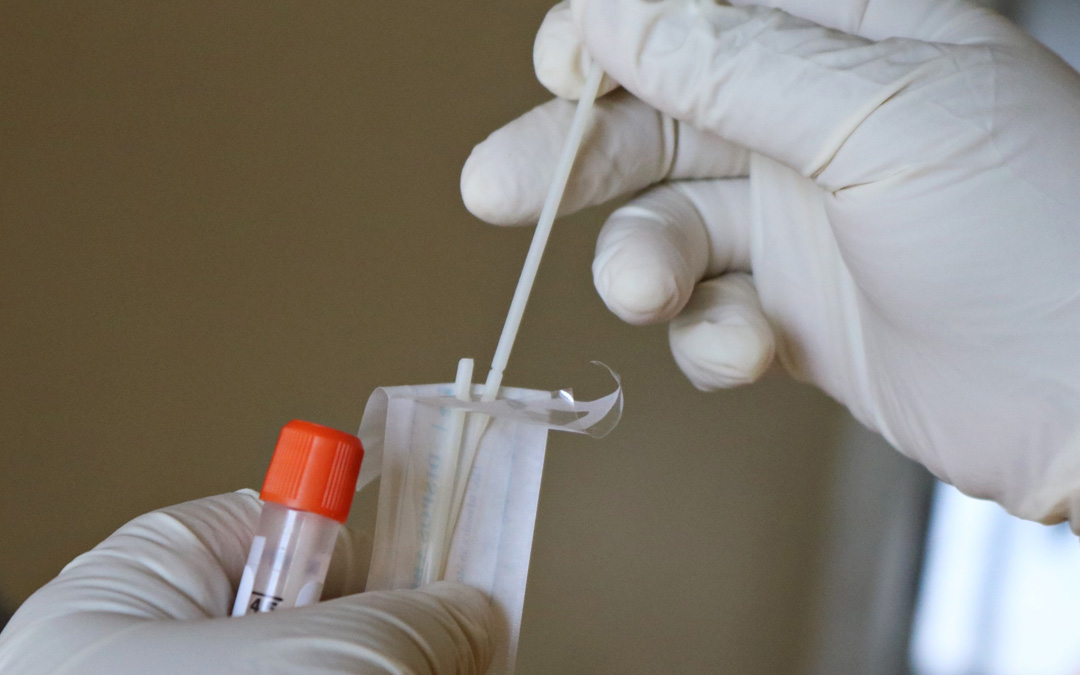Our last blog installment discussed RT-PCR testing and why it is considered the “gold standard” of COVID-19 tests. We’re proud to be performing this superior test for both drive-through and employer testing programs at ADx Health.
There’s a good chance that you may have seen “antigen” tests become available, including for at-home testing. But what is antigen testing, and how does it compare to RT-PCR?
Antigen testing has almost no similarity to PCR testing. Antigen testing doesn’t detect RNA but rather detects the proteins that make up the structural components of the virus. The test is based on the concept of antigen-antibody binding.
In humans and other higher organisms, antibodies are a critical part of the immune system. They are unique proteins that are shaped very specifically to bind to a specific piece of another protein. This particular piece of the target protein is known as the antigen. In fact, the term antigen simply means any molecule that is being recognized by an antibody. In most cases, antigens are small, unique segments of a protein. In the case of the Coronavirus and other viruses, during an infection, the human immune system creates multiple specific, unique antibodies that attack a variety of different antigens on the virus, allowing these antibodies to attack the virus and clear it from the body.
Antigen-antibody binding is critical for humans to clear infections in the natural world. Still, it is also helpful in the laboratory world to detect the presence of an infection. When antigen-antibody binding is used as a test, usually just one specific antigen of the virus is chosen to create an antibody that specifically recognizes it. In the case of Coronavirus, usually, a particular part of the “spike protein” from the virus’s outer shell is selected as the antigen. An antibody that recognizes a spike protein antigen is created artificially. This artificial antibody is attached to other enzymes or special chemicals that allow it to be detected in the laboratory once it has recognized a viral particle in a sample.
Some crucial differences between antigen testing and PCR testing are worth noting. Unlike PCR, because protein-based antigens cannot be easily replicated in a chain reaction the way DNA and RNA can, no amplification occurs during antigen testing.
Even though antibodies are shaped to recognize their antigens quite specifically, there is a significant similarity between the antigens present in the SARS-CoV-2 (COVID-19) virus and those present in other related Coronaviruses (e.g., those that can cause the common cold). Creating antigen tests that are highly specific for a particular viral is usually a more complex and lengthier process than creating precise PCR tests. In many cases may be impossible to develop an antigen test with specificity similar to that of PCR.
Therefore, since antigen testing lacks an amplification step and is based on recognizing parts of the virus that can look very similar to other related viruses, both the sensitivity and the specificity of antigen testing are generally lower than the sensitivity and specificity of PCR.
The Benefits of Antigen Testing
So, why would anyone use antigen testing at all? Fortunately, even though many of the antigen tests that were produced early in the pandemic had inferior sensitivity and specificity (resulting in excessive numbers of false-negative and false-positive tests), several of the antigen tests that have been created later in the pandemic after more extensive research and validation have shown relatively good performance. They are generally not quite as sensitive or specific as PCR but still good enough in both aspects to be useful in the right setting.
An essential aspect of antigen testing is because the process doesn’t require thermal cycling (raising the temperature up and down repeatedly) — which is necessary for PCR — it can be used to create rapid tests and point-of-care tests. Some of these tests look similar to a pregnancy test and can be transported to sites outside of a laboratory or used at home.
These are the primary benefits of antigen tests. They’re more transportable than PCR, and in some cases, they are simple enough to be performed and interpreted by an untrained person. However, it’s also worth noting that occasional cases may be challenging to interpret as positive or negative. In general, since more viral particles are necessary for an antigen test to turn positive compared to PCR, early infections are less likely to be positive by antigen testing, which means the false-negative rate of antigen testing is higher when they are used for someone who has recently been exposed.
Importantly, antibody testing should not be confused with antigen testing. Even though both are based on the same antigen/antibody binding concept, these are different tests with completely different purposes. We will discuss antibody testing in a later blog.
In summary, both RT-PCR and antigen tests have value when used in the appropriate setting, but it is important to remember the differences between the two. Antigen testing is more transportable, usually cheaper, and often requires less skill or equipment to perform, but it also generally has a higher risk of both false-negative and false-positive results. RT- PCR testing must be performed by trained professionals within a laboratory using appropriate equipment, but it is considered the gold standard because of its unmatched high sensitivity and specificity.
In partnership with Northwest Laboratory, ADx Health is proud to perform the RT-PCR test on all direct-to-consumer COVID-19 tests, offering the gold standard in testing for both drive-through and employer-based testing. Learn more here.




